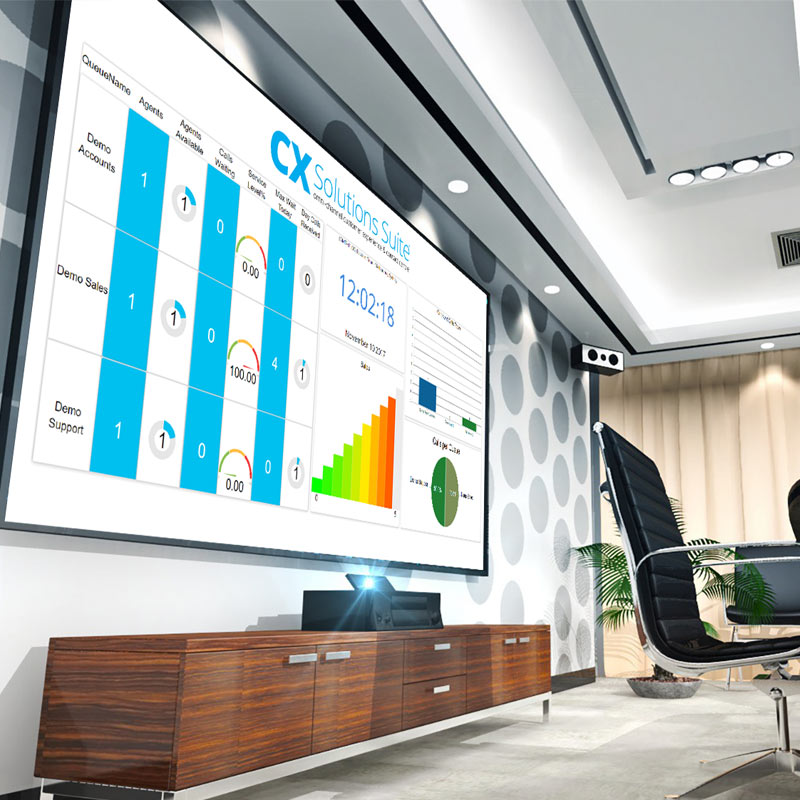9 Call Centre KPIs To Track For Customer Experience Success
May 20, 2020
The tracking and management of call centre key performance indicators (KPIs) is essential for measuring the effectiveness and efficiency of a call centre. But there are many potential KPI metrics you can track, and so one of the biggest problems call centre managers face is choosing which call centre KPIs are the most important. This post will help you identify the top 10 call centre KPIs to track for success.
Call centre KPIs can essentially be broken down into three key areas: indicators of the quality of the customer experience, operator and call centre efficiency metrics, and indicators of potential problems.
KPIs that reflect the quality of customer experience
For a call centre to be considered as functioning successfully, it will need to keep customers happy. Nobody likes being forced to wait on hold, or have what feels like a long and arduous customer service call, only to find their issue remains unresolved after the first call. 25% of millennials listed “making a customer service call”, as being in their top 3 worst things to have to do.
25% of millennials listed “making a customer service call”, as being in their top 3 worst things to have to do.
1. Average time in queue
With any call centre there will be periods of time that are much busier than others. During those busy times you can make customers aware that call volume is unusually high, prompt them to leave a message for a return call or give them the option to hold on line. Obviously, when call volume is low, the customer may experience an almost immediate answer.
So, with such a disparity between high and low call volume times, the best way to track callers wait time is with the average time in queue.
It’s a simple metric to calculate. Take the total time all callers wait in queue and divide it by the total number of calls answered by agents.
You can calculate average time in queue on a daily, weekly, monthly and longer basis to see how your call centre performs on any given day, and over time.
It’s the perfect indicator of whether your call centre is providing a good service to your customers—and can highlight the requirement for optimal workforce management.
First call resolution numbers are the single most important KPI for customer satisfaction.
2. First call resolution numbers
If there’s one thing people hate more than having to telephone a call centre, it’s having to phone the call centre more than once for the same issue. First call resolution numbers are the single most important KPI for customer satisfaction. For a call to be considered completed within “first call resolution” it means the customer got their issue resolved by the first agent they spoke with—they didn’t need to be transferred, escalated to a supervisor, nor have their call returned.
What does it mean if you find your first call resolution is low and you discover your customers often require a second or even third call?
Well, you will need to investigate the reasons why. Two key areas to focus on are specific problems with a product or service, and agent education and empowerment.
Problems with a product or service might be able to be solved with better initial customer education, or even some form of self-service help.
If you find customers are being transferred to supervisors, then you should ascertain whether a significant portion of the reasons behind the transfer could be dealt with by the front-line agents with better education.
Sometimes second and third calls are necessary because agents don’t have the required information and authority to carry out a customer request. You can resolve this ensuring your systems work in the way you need them to, and by appropriately empowering your front-line agents.
3. Average handle time
The time that elapses between a call being answered by an agent and when an agent disconnects is the “handle time”—the time spent “handling” a customer. The average handle time can be measured across the entire call centre, specific teams, and on an individual basis.
Average handle time is commonly measured as a call centre efficiency metric, but really it needs to be analysed against previous average performance for overall customer experience.
This metric can also highlight potential training requirements for individuals and teams, or even the need for better customer education on products and services.
Like all metrics, it’s essential to look for the underlying reasons behind any change.
 KPIs that measure call centre efficiency
KPIs that measure call centre efficiency
Without doubt, customer experience should be the top priority for every decision maker and call centre manager. Happy customers are not just loyal, they are also brand advocates who will recommend you to their friends and family.
Take heed: A Microsoft survey uncovered that 68% of 18–34-year-old consumers said they have stopped doing business with a brand due to single poor customer service experience.
With customer experience metrics in place, the next set of KPIs to measure for success are the ones which will tell you how efficient your call centre operations are.
68% of 18–34-year-old consumers said they have stopped doing business with a brand due to single poor customer service experience.
4. Service level
Service level is the amount of calls as a percentage answered within a prescribed number of seconds. For example, you may be aiming for 80% of calls answered within 30 seconds. Call centre managers and agents often have this metric displayed in real time, and aim to keep it within acceptable levels. But you should bear in mind the pressure to perform can lead to some agents delivering a sub-par service to your callers—certainly far from ideal if customer experience is your primary concern.
5. Occupancy rate
The occupancy rate is a simple measurement of the number of time operators are on live calls compared to their other tasks. If a call centre agent has a low occupancy rate, it can be an indicator of an inefficient worker. But it can also be an indicator of a too-complex workload or inefficient systems of a workflow. While it’s tempting for call centre managers to push for high occupancy rates, it’s vital to remain aware of operator stress levels with this metric.
6. Average after call work time
Along with the Occupancy Rate KPI, the average after call work time can be an indicator of an operator with too much work to handle. If a call centre agent spends too much time after each call fulfilling their other tasks, they may require more training.
 KPIs that should be considered warning signals
KPIs that should be considered warning signals
While you can easily inference call centre issues from the KPIs in the customer experience quality and call centre efficiency categories, there are 3 KPIs which spell disaster.
7. Average abandonment rate
Call abandonment is one of the worst things your customer can do. This is the percentage of people who hang up their calls before speaking with an agent. If this figure is high, it means you have a large portion of unhappy customers.
Look to the speed of answer and time in queue numbers to see why this might be happening.
8. Percentage of calls blocked
What’s worse than a customer having to wait too long in the queue? A customer never getting through in the first place. “Percentage of calls blocked” is the number of customers who receive a busy tone, or who are redirected to voicemail.
If this KPI creeps up in your call centre, check the number of calls your software can handle, and make sure you keep staff at appropriate levels with better workforce management.
9. Customer satisfaction
As with any customer-facing industry, the measurement of customer satisfaction is central to a call centre’s performance. Unfortunately, unlike all the above metrics, customer satisfaction cannot be easily reduced to a number. Generally, customer satisfaction metrics need to be measured manually, either through customer surveys or via monitoring of calls and assembly of quality measurement reports.
The method of measurement for this KPI is vital. It’s easy for companies to mislead themselves as to the exact level of customer satisfaction. It’s equally easy for customers to give a misleading indicator of satisfaction, as the loudest customers are generally ones who are not satisfied.
Want a quick and easy way to get a handle on how satisfied your customers are? Click here to learn more about our CCX Survey module.
 Summary of Key Points:
Summary of Key Points:
The business landscape continues to evolve and customers are no longer obliged to stay loyal to any one particular business. At the same time businesses need to remain competitive by being efficient in the way they operate. So, measuring the KPIs associated with the quality of customer experience, and call centre and agent efficiencies is paramount to success. And at the same time keeping an eye on the metrics which can show you if there are major issues ahead.
If you would like a demonstration on how the CCX software suite can help you provide an amazing customer experience with all these KPIs and more, simply get in touch with one of our friendly team members via your preferred contact method below…

 KPIs that measure call centre efficiency
KPIs that measure call centre efficiency KPIs that should be considered warning signals
KPIs that should be considered warning signals Summary of Key Points:
Summary of Key Points: